A Prickly Mama and Her Babies
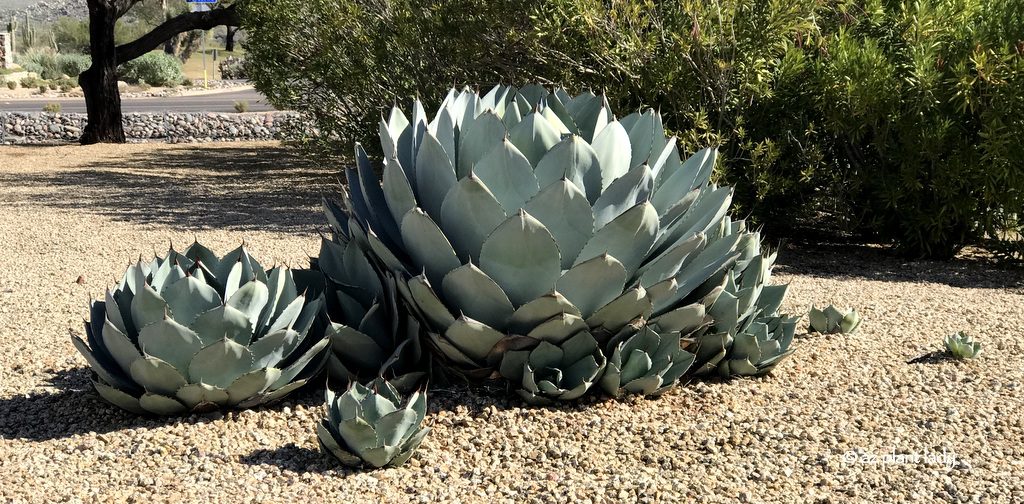
artichoke agave (Agave parryi ‘truncata’)
Today as I was downloading photos from my phone, this one caught my eye. It is a picture of an artichoke agave (Agave parryi ‘truncata’) along with her babies. For some reason, it spoke to me about family relationships. Some of her tiniest children are venturing a bit too far like our kids do as toddlers when they walk into the street without any fear.
Some of her tiniest children are venturing a bit too far like our kids do as toddlers when they walk into the street without any fear. Then there are those slightly older babies who I like to describe as ‘tweens’ who still enjoy their mother’s protection while looking outward into the world.
Then there are those slightly older babies, nestled under their mother’s protective leaves, who I like to describe as ‘tweens’ who still enjoy their mother’s protection while looking out toward the wonders of the world.
The medium-sized agave baby is the teenager who enjoys the illusion of independence while still being attached to their mother by an underground root – kind of like relying on their parents for allowance, paying for their phone, and driving them where they need to go.
I especially love the largest of the babies and the relationship to its mother as it speaks of my relationship with my two oldest daughters. They are individuals, yet they enjoy being close to their mom and go to her for advice and even enjoy hanging out together.
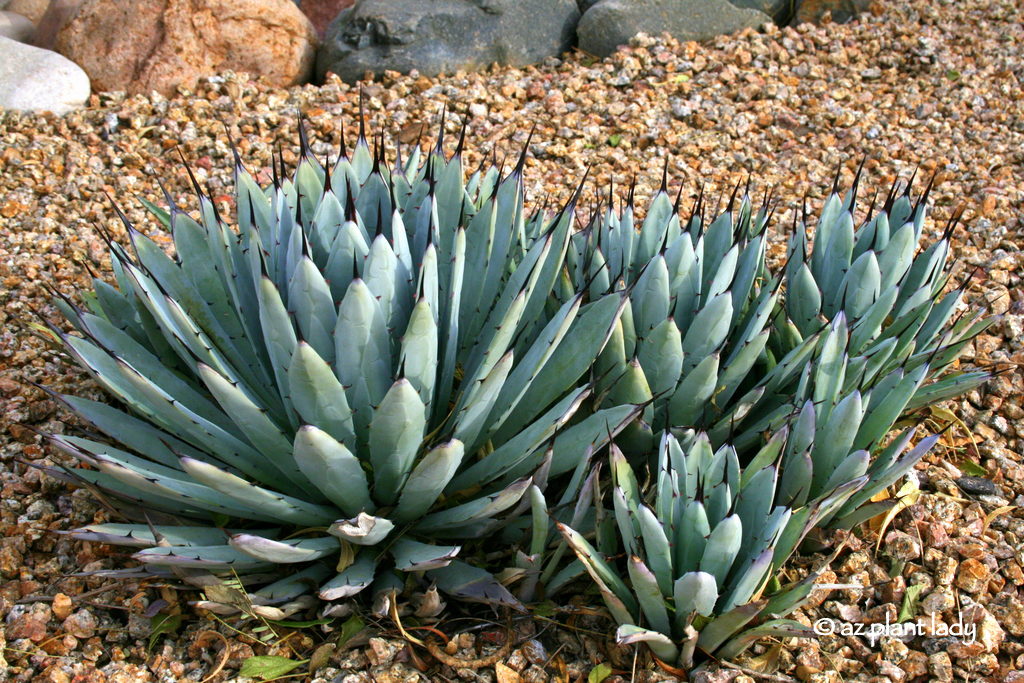
Black Spine Agave (Agave macroacantha)
Many species of agave propagate themselves by producing ‘pups’, which are attached to the parent plant by an underground stem. These new agave can be removed and replanted elsewhere in the landscape. It’s not hard to do and I wrote about how to do this, which you can read here.
Have you ever replanted an agave baby?

 Noelle Johnson, aka, 'AZ Plant Lady' is a author, horticulturist, and landscape consultant who helps people learn how to create, grow, and maintain beautiful desert gardens that thrive in a hot, dry climate. She does this through her consulting services, her online class Desert Gardening 101, and her monthly membership club, Through the Garden Gate. As she likes to tell desert-dwellers, "Gardening in the desert isn't hard, but it is different."
Noelle Johnson, aka, 'AZ Plant Lady' is a author, horticulturist, and landscape consultant who helps people learn how to create, grow, and maintain beautiful desert gardens that thrive in a hot, dry climate. She does this through her consulting services, her online class Desert Gardening 101, and her monthly membership club, Through the Garden Gate. As she likes to tell desert-dwellers, "Gardening in the desert isn't hard, but it is different."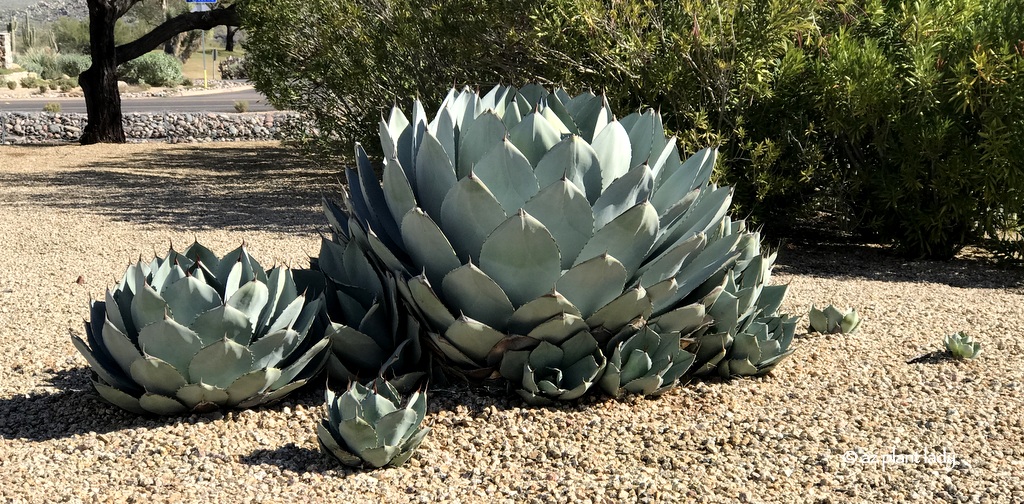
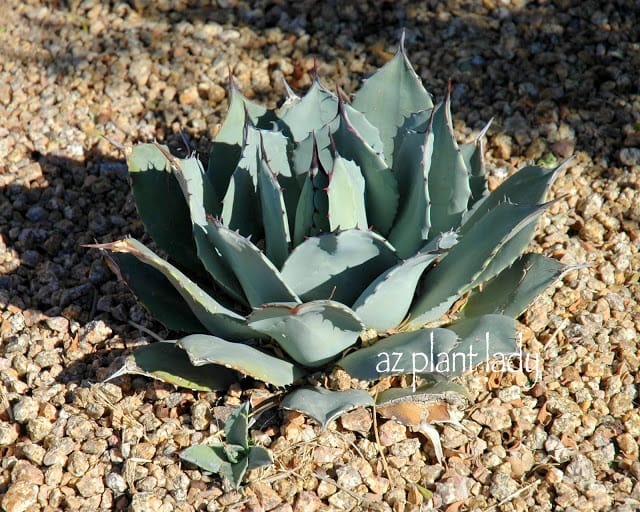
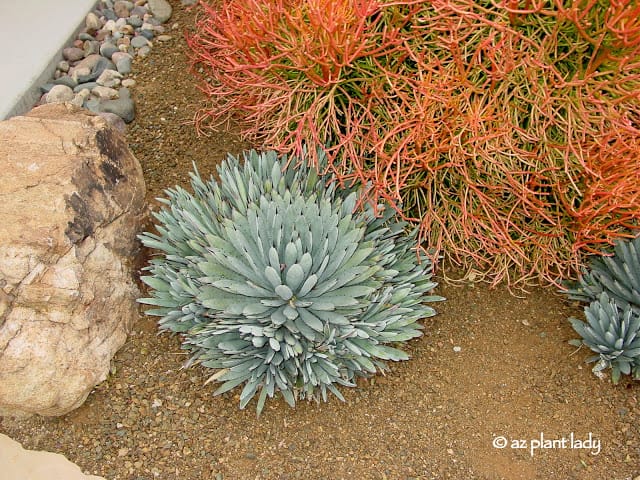









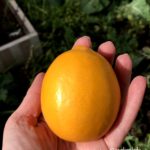
Yes, I have transplanted Agave pups – sent some as far as Florida and Oregon, as close as across the street, and even took a few of mine and gifts to me when I moved south. I have a tween from yet another colleague, which is now large and outgrowing its pot!
Hi David,
What a great example of how easy it is to move agave about throughout the country. I have three whale tongue babies growing in my garden from Texas.
Hi, is it okay to remove the artichoke agave pups that are nestled under it? I don’t want to harm the mother or the pups!
Hi Kristina,
Go ahead and remove them. You’ll have to cut the fleshy root that connects them to the mother plant, but she should be just fine!
I know this is a year old, but I just inherited a house with some agaves, with some fairly mature pups. To me, the pups pushing up on the mother take away from the appearance and shape of the mother. Most of the research I’ve done suggests you “can” remove them, but none seem to answer my question: “should” I for the health and appearance of the mother?
Hello Art,
Wow, that is a great question that I have never been asked before. You can remove them safely and in my opinion, it makes the mother plant look better. In cases where there is limited resources (water), removal of excess pups can help the mother plant. You can replant some of the pups elsewhere or give to friends and neighbors.